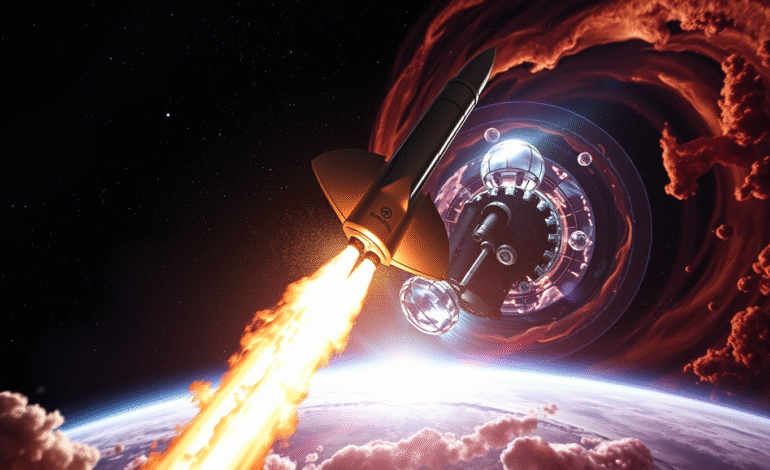Impulse Space Revolutionizes Geostationary Satellite Delivery with Same-Day Service, Targeting Commercial and Defense Users

In a bid to revolutionize satellite delivery, Impulse Space is proposing a concept reminiscent of Amazon’s same-day delivery on Earth, but for geostationary orbit satellites, located approximately 22,000 miles above the planet. The mission aims to condense what typically spans months into just hours.
Within a week, the startup specializing in in-space propulsion announced three significant partnerships intended to open up geostationary orbit (GEO) for commercial and defense users. These include a 2026 demonstration mission with defense contractor Anduril, a transportation deal with GEO communications startup Astranis in 2027, and a multi-launch agreement to carry Infinite Orbits’ servicing satellites to GEO from the same year.
Tom Mueller founded Impulse in 2021 after nearly two decades leading propulsion at SpaceX. His departure from SpaceX in 2020 marked the beginning of Impulse, a venture dedicated to developing last-mile delivery services in low Earth orbit (LEO) and ultra-fast satellite transport to GEO.
The common thread among these missions is Helios, Impulse’s methane-oxygen kick stage. A kick stage essentially serves as a small rocket engine system that rides on a larger rocket before firing its own powerful engine – Deneb – to propel spacecraft to their final destination.
Helios aims to function as the “same day” courier from LEO to higher altitude orbits. Should it perform as advertised, commercial operators could reach higher orbits much faster, and the Department of Defense could maneuver more quickly in an increasingly contested space region.
GEO isn’t just distant; reaching there and operating satellites from there present unique challenges. Spacecraft must traverse the high-radiation Van Allen belts – zones of charged particles trapped by Earth’s magnetic field – deal with latency in long-distance communication, and maintain their precise position.
The partnership between Anduril and Impulse could prove particularly profitable. The duo will collaborate on a demo satellite for rendezvous and proximity operations, a capability crucial for space domain awareness and deterrence. Impulse is providing the spacecraft – named Mira, which flew for the first time last year – while Anduril will offer a mission data processor, long-wave infrared imager, and other software-defined payloads designed for tracking and high-precision navigation.
The demo aims to have Helios transport the spacecraft to GEO within a day, after which the mission plans to capture images of resident space objects, analyze them, and autonomously execute precise maneuvers to observe these objects. This endeavor is often referred to as “maneuvering without regret,” or the ability to reposition satellites in orbit without jeopardizing the mission or wasting costly fuel.
On the commercial front, Astranis signed on for a 2027 mission that would see its MicroGEO satellites launched to LEO on a SpaceX Falcon 9 rocket and then delivered to geostationary orbit in less than 24 hours by Helios. This mission profile holds significant value for Astranis, as it will allow the company to expedite satellite activation dates for customers eagerly awaiting their satellite broadband services on Earth.
Lastly, Impulse signed a multi-launch agreement with France’s Infinite Orbits to carry several satellite servicing spacecraft to GEO via a ride-share program called Caravan. Impulse claims the Caravan offering will deliver multiple small satellites simultaneously, much like SpaceX’s ride-share program that allows companies to split the cost of a launch. The first Caravan mission is already fully booked for 2026, Impulse confirmed.
In recent years, the space industry’s rapid growth has primarily focused on LEO as operators adopted smaller, more affordable satellites for applications in communications and remote sensing. However, if Impulse succeeds, the next phase of growth may well be in GEO.






